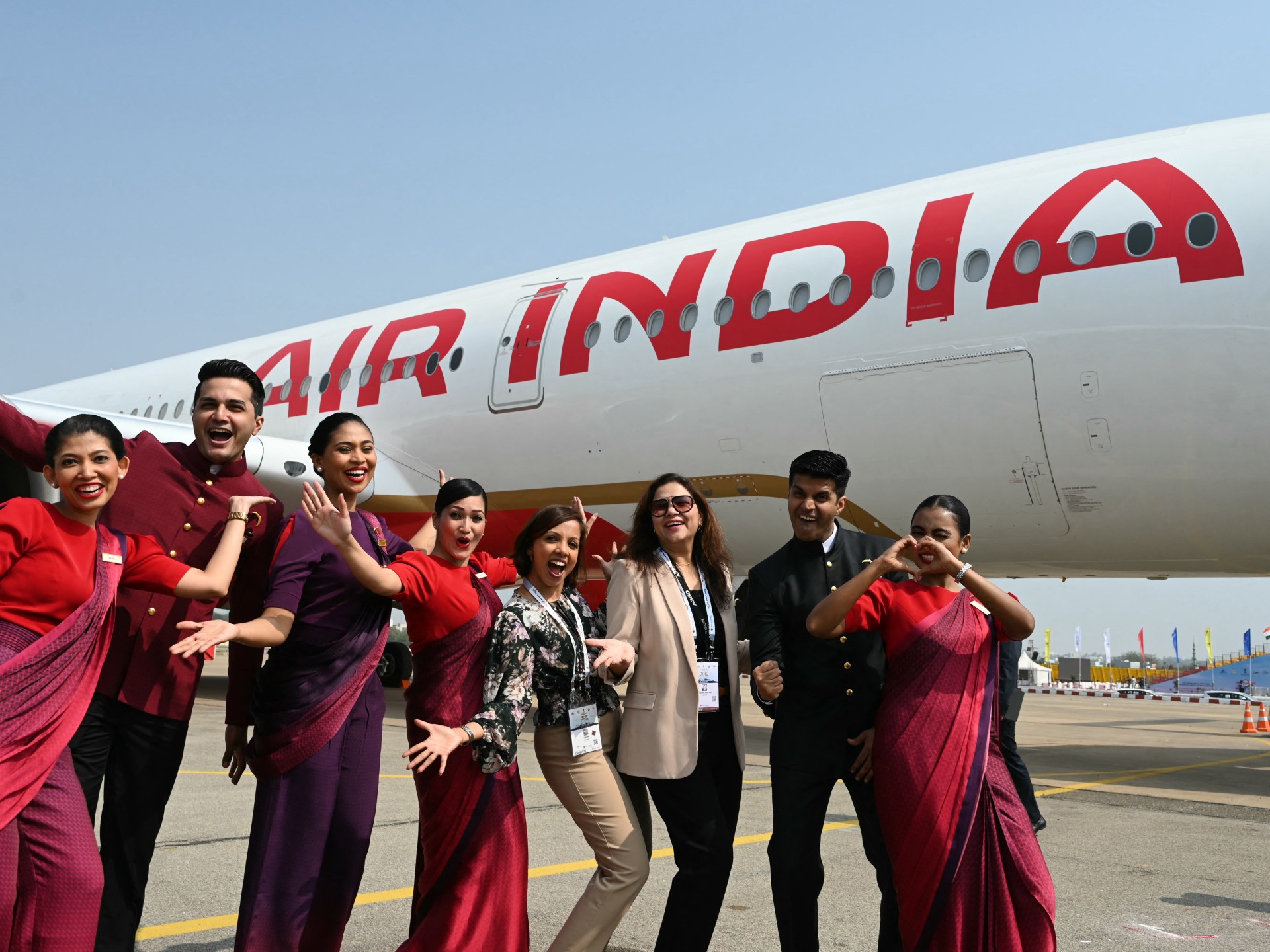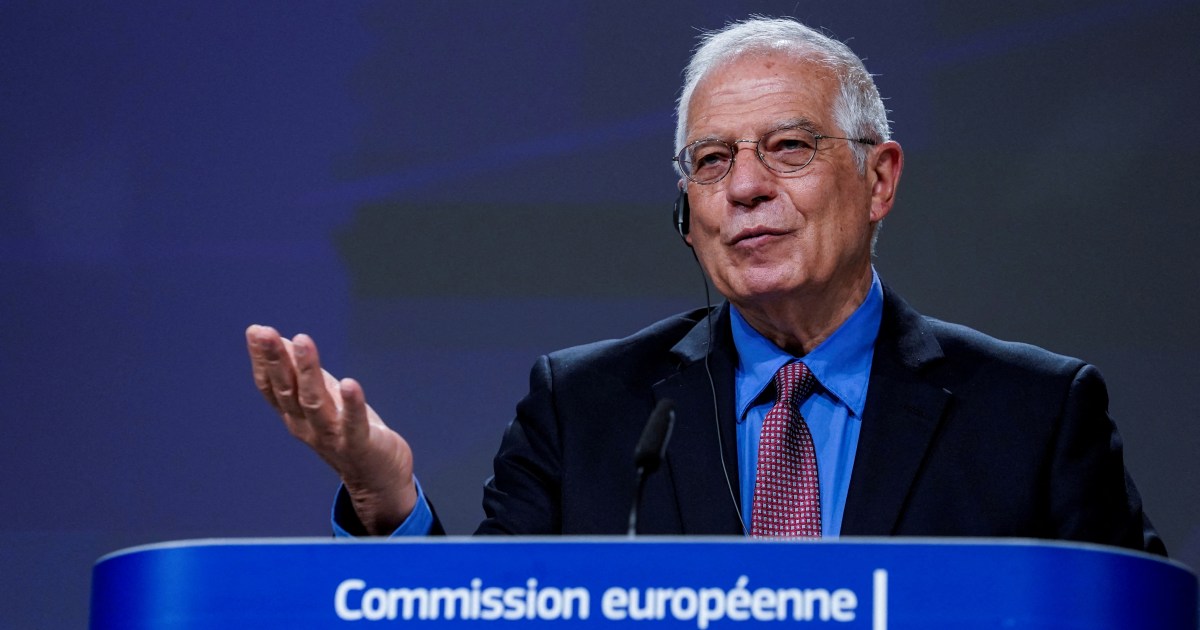After decades of decline, Air India is betting billions on a comeback
Air India was once so renowned for its service that Singapore’s founding statesman Lee Kuan Yew used the airline as a blueprint for launching the city-state’s own flag carrier in the early 1970s.
In recent decades, India’s national airline came to be seen as a cautionary tale of decline as it racked up billions of dollars in losses and battled a reputation for tardiness and poor service.
When the Tata Group bought the company in October 2021, returning control to the wealthy Tata family after decades of state ownership, CEO Natarajan Chandrasekaran laid out a clear objective: “To build a world-class airline”.
Tasked with leading this mission is Air India CEO Campbell Wilson, who was recruited from Singapore’s low-cost airline Scoot in 2022 to turn around the carrier, founded in 1932 by French-Indian aviator entrepreneur JRD Tata.
“Standards have slipped considerably over the years,” Wilson told Al Jazeera in an exclusive interview.
But Wilson is adamant that “the journey to restoring Air India to its former glory is well under way” under a five-year turnaround plan unveiled last year.

The Tata Group has spent tens of billions in transforming the company in recent years, investing in 470 new aircraft, cabin modernisation, a brand refresh and customer service changes.
After the “capital-intensive” five-year plan is completed, Air India hopes to capitalise on the huge growth potential of the Indian aviation market, the world’s third-largest with some 145 million domestic passengers annually.
The Tata Group’s initial priority has been its ageing fleet, the upkeep of which has been neglected for decades.
Shortly after the ownership change, Air India added 36 leased aircraft – 11 Boeing 777s and 25 Airbus A320s – which allowed the airline to launch six new international routes and increase frequency across a further 24.
Air India’s largest investment came with its announcement of plans to buy 470 new Airbus and Boeing aircraft at a cost of $70bn, including 140 A320neos, 70 A321neos, and 190 of the 737 MAX.
Wilson said the acquisitions will enable Air India to “operate the most advanced and fuel-efficient fleet within five years”.
The airline also plans to spend $400m to retrofit its existing fleet by refurbishing cabin interiors.
Wilson said the retrofit will initially focus on the airline’s narrow-body A320neo and A321neo aircraft, after which 40 legacy wide-body Boeing 777s and 787s will receive a “complete makeover with all new interiors”.
Other changes to improve onboard service include introducing premium economy seats on selected long-haul flights and new food menus.
Henry H Harteveldt, the president of Atmosphere Research Group, said the Tata Group’s investments may help to build a foundation for Air India to succeed, but the changes will not matter much if the airline does not manage to be reliable and punctual.
Above all else, Air India should strive to be seen as “the on-time machine”, Harteveldt told Al Jazeera.
“If a service isn’t considered reliable, customers won’t have the confidence to book with that airline,” he said.
Damaged relations
The Tata Group’s biggest challenge of all may be addressing Air India’s damaged relationship with its customers.
Apart from recurring issues with reliability and punctuality, the airline’s image has been tarnished by high-profile controversies involving its customer service, such as an incident in February in which an 80-year-old passenger collapsed after being forced to walk 1.5km (2.4 miles) from the plane to the immigration counter due to a shortage of wheelchairs.
John Gradek, an expert in aviation management at McGill University in Montreal, Canada, said that Air India’s fleet renewal efforts will fail to revive the airline’s fortunes unless it can establish a “new customer service mindset among its customer-facing staff”, a task that has proven difficult “for many airlines looking to grow their international brand”.
More than two years after the Tata Group’s takeover of Air India, the airline’s turnaround plan has completed its first phase.
Its achievements so far include a $200m investment in new IT to boost reliability and the recruitment of more than 3,800 new employees across several areas to support growth.
Harteveldt said the investment in IT was especially welcome as Air India has been “tech-starved for a long time because of the Indian government’s inability or unwillingness to invest in the airline adequately”.
For the Tata Group, the progression has continued into 2024 with the scheduling of new international routes with the newly delivered Airbus A350-900 between Delhi and Dubai.
Additional changes, such as consolidating carrier Vistara into Air India, are expected to occupy Tata’s focus for the remainder of 2024, in keeping with Chandrasekaran’s view of consolidation as “an important milestone in the journey to make Air India a truly world-class airline”.
There are also internal issues with its subsidiary Air India Express, which has both domestic and international flights. Since Tuesday, it has cancelled at least 90 flights as more than 100 crew members have called in sick at the last minute, essentially a strike action reportedly over pay and related matters.
Cancellations across the Indian budget carrier represent owner Tata Group’s second setback in as many months, as Vistara was forced to adjust its schedule with flight cancellations amid a pilot shortage only in April.

Harteveldt said the “devil is in the details when it comes to airline mergers”.
If the airline teams can “be transparent, even humble”, operational faults can be smoothed out during the integration’s initial months, he said.
After being in the government’s hands for more than half a century, Air India’s recovery is expected to take time, Harteveldt said, but there is “no reason in the world why, with the right investments and focus, Air India can’t successfully distinguish itself from other Indian-based airlines”.
Wilson said Air India’s long-term goal is to grow its market share to 30 percent both domestically and internationally by 2027.
The goal, he said, is to create an airline that is “bold, confident, and vibrant, but also warm and deeply rooted to its rich history, traditions, and warm Indian hospitality”.
Still, Wilson said he is under no illusions that the turnaround will happen overnight.
“It’s a marathon, not a sprint,” he said.




